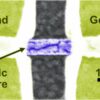The health implications of physical inactivity are truly a global issue with physical inactivity responsible for up to 8% of non-communicable diseases and deaths across the world, finds research published online in British Journal of Sports Medicine.
It is in high-income countries that physical inactivity has the greater relative impact on non-communicable disease and death (in terms of increased risk to the average person), but it is middle-income countries that have the greatest number of people affected by physical inactivity and face the biggest strain on health resources.
Physical inactivity is a known risk factor for premature mortality and several non-communicable diseases, including coronary heart disease, stroke, hypertension, type 2 diabetes, and several cancers.
Levels of physical inactivity increase according to the income levels of countries, and in 2016 levels of physical inactivity in high-income countries were estimated to be more than double those in low-income countries.
With physical inactivity increasing across the globe and 80% of non-communicable disease deaths now occurring in low- and middle-income countries, the authors set out to estimate the current burden of global non-communicable disease associated with physical inactivity.
From the scientific literature they obtained estimates of the impact physical inactivity has on major health outcomes (relative risks) and data on physical inactivity levels for 168 countries in 2016.
These data were used to estimate how much disease could be averted in each of the 168 countries through increased physical activity by calculating population-level, prevalence-based population attributable risks (PAR) for each outcome in each country and then collating the results.
Physical inactivity was defined as less than 150 minutes of moderate-intensity or 75 minutes of vigorous-intensity physical activity per week.
The calculations show that the proportions of non-communicable diseases attributable to physical inactivity ranges from 1.6% for hypertension to 8.1% for dementia. Population-level, prevalence-based population attributable risks increase with countries’ income levels and are more than two times higher in high-income countries than they are in low-income ones.
While the burden per average individual is greater in high-income countries, it is middle income countries that are hit harder overall because of their greater population sizes, the results show. This means 69% of all deaths and 74% of cardiovascular disease deaths associated with physical inactivity occur in middle-income countries.
In general, the highest burden of non-communicable disease associated with physical inactivity is in Latin American and Caribbean countries, and high-income Western and Asia Pacific countries. The lowest burden is in countries in sub-Saharan Africa, Oceania and East and Southeast Asia.
This is an observational study, and as such, can’t establish cause, and the authors point to some limitations. For example, the population-based approach used to estimate the disease burden results was theoretical, competing risks were not accounted for, and the relative risks used to determine the impact of physical inactivity on health outcomes were not country specific.
In 2018, the World Health Assembly adopted a target to reduce global levels of physical inactivity by 15% by 2030.
“The global health burden associated with physical inactivity is substantial,” the authors conclude. “The public health burden associated with physical inactivity is truly a global issue that will require international collaboration to mobilise change and achieve these public health goals.”
Physical inactivity cost the world $67 billion in 2013 says first ever estimate
More information:
Physical inactivity and non-communicable disease burden in low-income, middle-income and high-income countries, British Journal of Sports Medicine (2021). DOI: 10.1136/bjsports-2020-103640
Provided by
British Medical Journal
Citation:
Physical inactivity is responsible for up to 8% of non-communicable diseases and deaths worldwide (2021, March 29)
retrieved 29 March 2021
from https://medicalxpress.com/news/2021-03-physical-inactivity-responsible-non-communicable-diseases.html
This document is subject to copyright. Apart from any fair dealing for the purpose of private study or research, no
part may be reproduced without the written permission. The content is provided for information purposes only.



